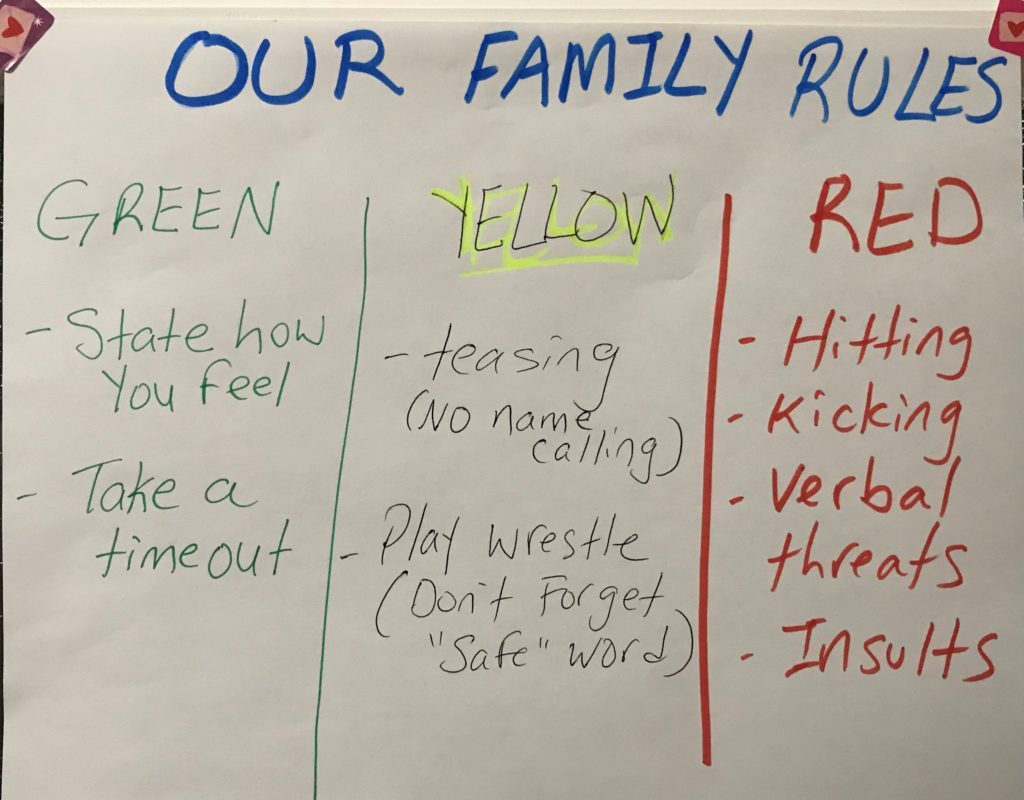Do you have a sibling? Do you recall fighting with them? Sibling rivalry is common amongst all families. It can cause stress to all members of the family and can last throughout childhood. Here are some helpful tips to help you manage sibling rivalry and avoid having World War 3 break out in your home.
Is sibling rivalry ever okay?
Children have different personalities and as they develop, they learn a variety of life skills. Some of these include learning how to cope with conflict, perspective taking, compromising and rules for negotiating. Siblings often “practice” these skills with one another as well as with their peers. Thus, sibling rivalry can be a common occurrence between sisters and brothers.

Consider needs of the child
A child’s developmental needs or position in the family maybe a contributing factor to sibling rivalry. Younger children may have a more difficult time understanding what is fair (e.g., bed time or other privileges) and may perceive that a parent is playing favourites. Some kids need more attention from their parents or haven’t acquired the skills for competition. Older children may feel burdened with more responsibilities.
When is it too much?
Siblings are going to argue and display anger toward one another. There is a difference between arguing in a somewhat calm manner versus being verbally and physically aggressive. Sibling rivalry maybe too much when that feeling of anger turns to animosity. Children need to understand that feeling angry is okay, however, what you do with that anger is even more important.
How to manage?
Yes, sibling rivalry can be frustrating for parents. However, children can learn to cope with disputes and engage in some degree of healthy sibling rivalry. It may be difficult to determine if you should immediately jump in and be the referee or let them fend for themselves. Finding a balance between the two is ideal. Children need to be taught that fighting is not an acceptable way to resolve conflicts. The first step to dealing with sibling rivalry is understanding the reasons why your children are fighting to begin with.

Set some ground rules
Rules in any family are important and so are rules around fair fighting. Parents can provide the tools to help children settle their issues while respecting one another. Create a family poster that outlines three zones of behaviour. Green means acceptable (e.g., using “I” statements to describe how you feel), yellow is caution (e.g., teasing) and red is forbidden (physical and verbal aggression) with consequences (e.g., loss of privilege).
Provide individual attention
Planning activities as a family can be fun, but children also need some time on their own. Ensure you carve out individual attention with each child. It doesn’t have to be a big excursion, even spending time at a coffee shop can provide the attention your child is seeking.

Encourage teamwork
Managing sibling rivalry means your children have the opportunity to see you as role models and can practice different conflict-resolution skills. Play a board game as a family where it is children verses parents. A great game to consider is Beat the Parents.
Seek input from your children
Often sibling rivalry is a result of children feeling that things are unfair. Seek input from your children and create a family plan that is agreed upon by all. For example, for one month, one child gets to decide the restaurant, or which movie to watch.
Sibling rivalry will occur in your household. By being proactive and focusing on teaching your children conflict resolution skills, you will be able to restore some order to your family.







